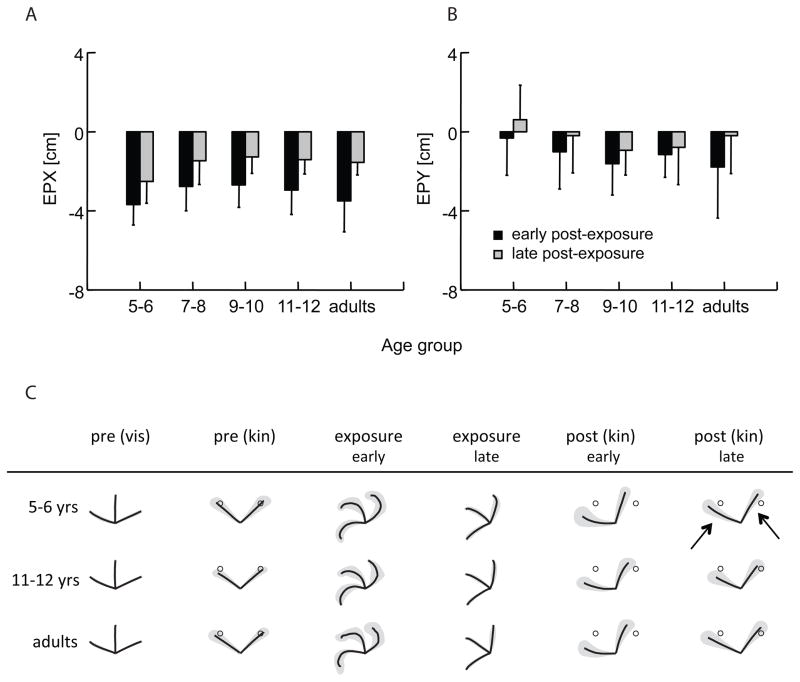Figure 5.
Group means for EPX and EPY; A: EPX, representing movement direction error; B: EPY, representing movement extent error. Early refers to the first block, and late to the last block during post-exposure; error bars represent standard deviations. C: Group averages of the movement paths for the 5–6 and the 11–12 year-old children, and the adults, for visual and kinesthetic pre-exposure, early and late visual exposure, and kinesthetic early and late post-exposure. The shaded areas indicate the averaged spatial variability of the movements. The open circles in the kinesthetic conditions denote the target positions. The arrows in the late post-exposure phase point out the slightly curved movement paths of the young children; movement paths of the older children and the adults are straighter, and end closer to the target circles, particularly for the dominant hand.

